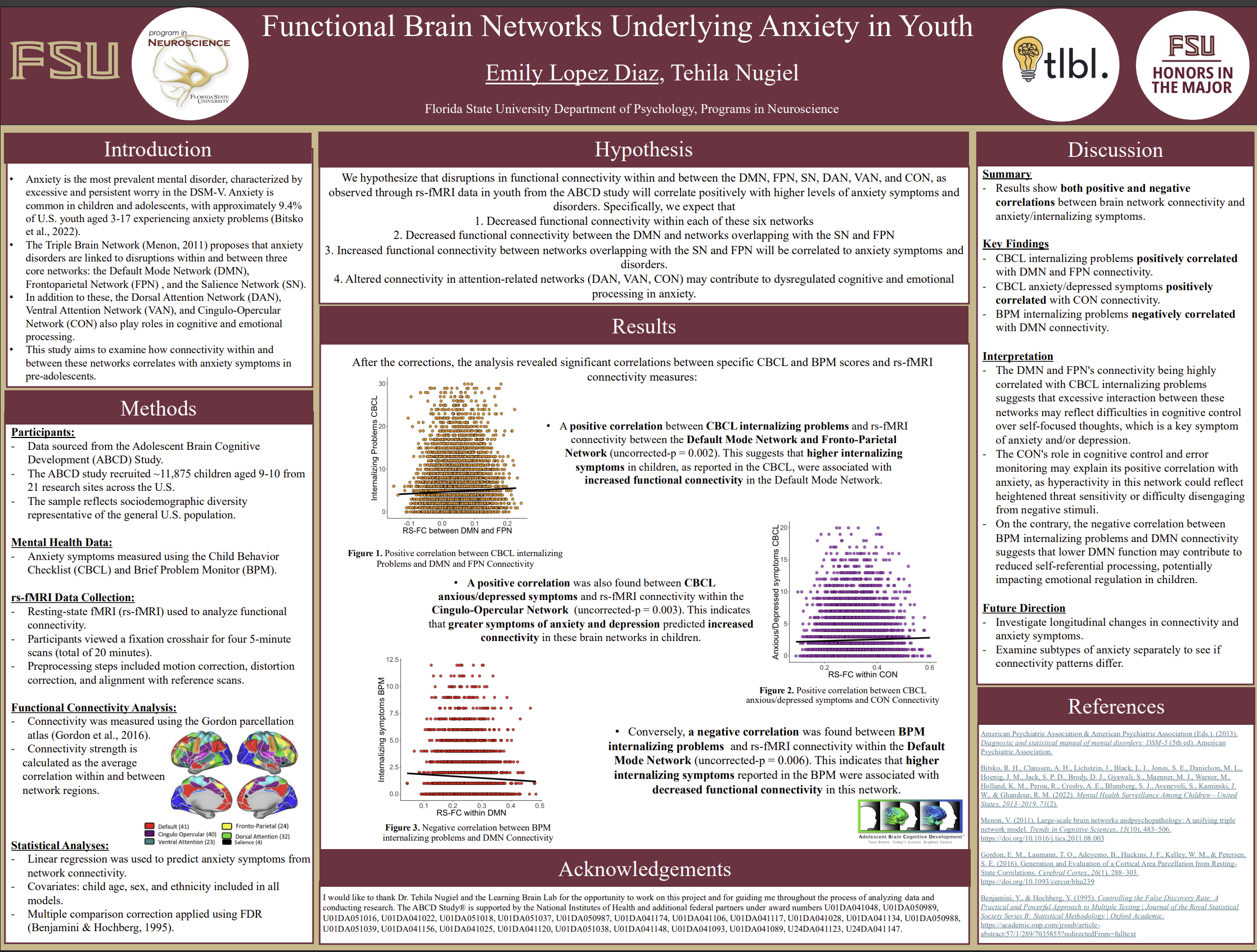Research Symposium
25th annual Undergraduate Research Symposium, April 1, 2025
Emily Lopez Diaz Poster Session 4: 3:00 pm - 4:00 pm / Poster #232

BIO
I am a third year Cell and Molecular Neuroscience student that is currently in the Learning Brain Lab at Florida State University working on my Honors in the Major project. This research project has allowed me to learn how to analyze data and conduct research outside of a classroom while still being able to explore my interests in addressing the impact of mental health issues in youth. With future plans to go to medical school and become a pediatrician, this research project allowed me to advance my knowledge in holistic approaches within medicine. This will allow me to become an advocate for youth that are going through mental health crises within my role as a pediatrician while helping to reduce the stigma surrounding societal perceptions of psychological health.
Functional Brain Networks Underlying Anxiety in Youth
Authors: Emily Lopez Diaz, Dr. Tehila NugielStudent Major: Cell and Molecular Neuroscience
Mentor: Dr. Tehila Nugiel
Mentor's Department: Department of Psychology Mentor's College: College of Arts and Sciences Co-Presenters:
Abstract
Anxiety is a prevalent mental disorder that is characterized by excessive and persistent worry. This study investigates the relationship between functional connectivity and anxiety in pre-adolescent youth using a prominent theory of brain function underlying anxiety, the Triple Brain Network Model. Using data from the Adolescent Brain Cognitive Development (ABCD) Study, we will analyze six key brain networks: the Default Mode Network (DMN), Frontoparietal Network (FPN), Salience Network (SN), Dorsal Attention Network (DAN), Ventral Attention Network (VAN), and Cingulo-Opercular Network (CON) to examine how disruptions within and between the networks correlate with anxiety symptoms. We hypothesize that anxiety symptoms correlate with decreased connectivity within and between these networks, decreased connectivity between the DMN and networks overlapping the SN and FPN and increased connectivity between networks that overlap with the SN and FPN. Our findings aim to provide insights into how large scale brain networks are related to anxiety in pre-adolescent youth.
Keywords: Neuroscience, Youth, fMRI imaging, Anxiety


